Click to view our Accessibility Statement or contact us with accessibility-related questions


















Short intro into split keyboards

search
close
Sort by: Newest
keyboard_arrow_down
charlie323a
0
Aug 11, 2023
One obvious answer would be ergonomics, but this could be misleading. Sure, people with existing health issues (RSI, carpal tunnel syndrome) may try to alleviate discomfort or pain developed on classic keyboards by turning to splits, while some others use them as a preventive measure. However, an even larger segment of split users may simply aim for performance, minimal movement, function over form – by fixing what they think are the design flaws and weaknesses of the standard keyboard layout.

plantastic
10
Jul 31, 2023
Not all true splits are columnar. For example, Keeb.io Sinc, Keebio Quefrency (picture of mine attached!), Dygma Raise, Mistel Barocco, Keychron Q11. These keyboards can give you the benefits of splits with a traditional staggered keyboard feel. Some can be customized with tenting by buying a different case (like the Keebios) and some have tenting built in (Dygma Raise).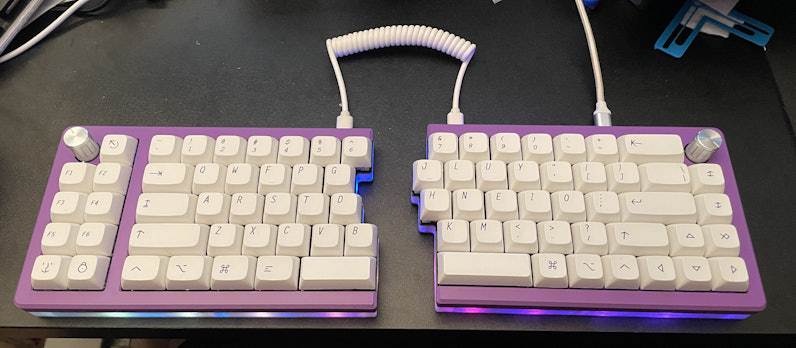

(Edited)

Aristarco
209
Jul 28, 2023
I used a Microsoft Natural Keyboard exactly like the one in the photo for almost 20 years, but with Spanish Latin American Keycaps. It was so sad to let it go when the plastic became brittle and some stabs broke, rendering it almost useless. I've been procrastinating but I promised myself to repair it. In fact, the untimely demise of that keyb was what led me to mech keybs. When I used one, I never looked back. Now that I'm making my own designs, I've been thinking of making a clone. Thanks for the article. It was very informative.
(Edited)

dovenyi
78
Jul 29, 2023
AristarcoIn fact, I came late to the party, started with designing my own split from scratch, so I have never used this one or any other prebuilt ergo split for other than testing. I bought this MS for my vintage collection, but I'm aware the model was important for many people. Thanks for the insight!

dmend
8
Jul 28, 2023
I've tried many keyboards in my time and the best one, hand's down, has been the ZSA Moonlander! It solves several of the issues that this article mentions, e.g. offering a single, easy firmware update to cover both halves at once.
Being Drop, here's a photo with custom keycaps: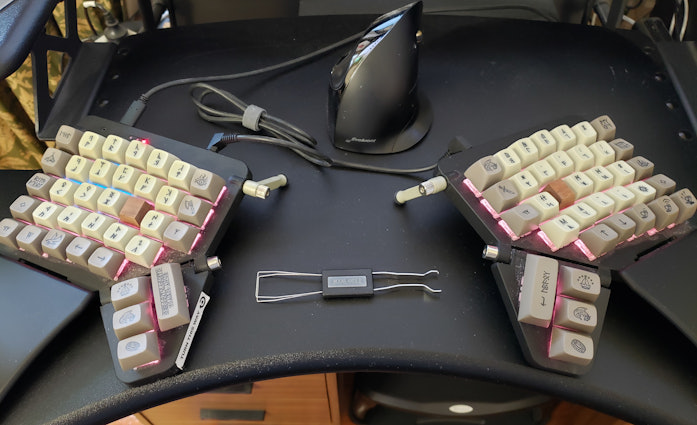

DropDeadAlex
1
Jul 28, 2023
I'm very happy with my 5layers layout. At the same time it has a logic organization that make it easier to a newcomer from a legado keyboard, it is very efficient to use both with alternating hands or left single handed
https://github.com/DropDeadAlex/sys-customs/tree/main/Keyboards/diagrams/Corne
(Edited)

JustBob
3
Jul 28, 2023
I still use the MS Natural Keyboard Elite. I wish someone would make a 99.9% copy of this style. I’ve owned 2 over the course of its introduction. 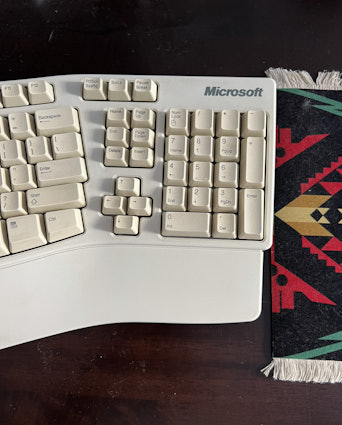

Trike-Mike
15
Jul 27, 2023
Great article.
My preferred daily driver is a Corne with a 3 layer keymap that gives me All the Things. My path was a non-split ortholinear with almost standard layout to ErgoDox to the Corne. Still use the others because I like them but the Corne is by far the most comfortable day in, day out.
Keycaps.... once one has broken their brain on sometimes wildly different layouts, blanks are your friend. No more worrying about whether a keycap with a given legend exists for where you need it.
Trike-Mike
15
Jul 31, 2023
I like that Azimuth a lot, @dovenyi . However, your comment about a true split needing room for a cat between the halves has a practical aspect. Two of my cats often feel the need to help (sleep) between me and the keyboard. The split is the only way I keep getting work done with the Corne giving more room for cat than the ErgoDox.
Tifereth4
44
Aug 2, 2023
Trike-MikeCorne was my first split ergo experience and I cant imagine going back to a traditional QWERTY staggered keyboard. Actually I tried recently and it was as if I had forgotten how to type!
Tifereth4
44
Aug 2, 2023
Yeah that makes sense for small parts. Maybe premade kits for those interested. I just want more keycap options or a Drop DSA and XDA set that satisfies all markets!
PRODUCTS YOU MAY LIKE
Trending Posts in Mechanical Keyboards
The-Cindy
This is easily my new favorite keeb
The IDOBAO ID80 Crystal Gasket Keyboard Kit is a standout choice for mechanical keyboard enthusiasts seeking both aesthetics and performance. Its transparent acrylic case beautifully showcases the...
Dec 20, 2024
Squizzle
Keyboard & Drink
Shine-Through LOTR Keycaps Concept
Would anyone else be interested in a shine-through set of LOTR keycaps? Imagine a glowing black speech keycap set that seduces like the one ring. Perhaps the pale blue moonlight glow of the elven...
Dec 20, 2024
Akofena
Are shipments to Argentina safe?
I want to buy a keyboard with some keycaps ! but i live in argentina. ty
Dec 17, 2024

tbui
Absolutely stunning
The colors really pop on a white board. Easily one of the best caps I own!
Dec 17, 2024
bobbibeer1976
False Advertising BEWARE
This company should be ashamed of themselves. Advertising to young people who save all their money and want nothing more than a keyboard and advertise to them that it is in stock and will be shipped asap and they will arrive before Christmas. Only to "ship" and package and get their hopes up and it arrives and there is no keyboard in the package. Then to get on the website and it isn't even going to ship until January. This happens AFTER you have received their money and made promises that it was arriving, on it 's way, etc! Shame Shame on you!!!
Dec 16, 2024

EuclideanGambit
Closest profile to MT3
I really enjoy the MT3 profile, it has actually become kind of difficult to type on other profiles. So I was looking for some that might be close and noticed the SA profile. I was wondering if there were anymore that were close to it. This would open my options significantly when shopping around.
Dec 15, 2024

tbui
Displaying my DCD Lunar New Year set (Max)
Enough for a full base kit plus novelties, just gotta watch the ample space on top when moving/tilting and near the edges it gets tight so the caps don't fit in as smoothly.
Dec 15, 2024


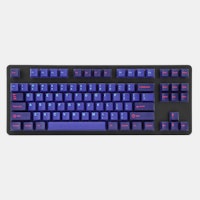
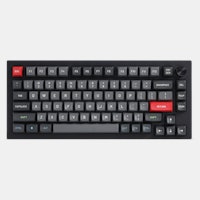
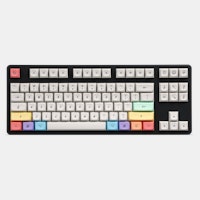
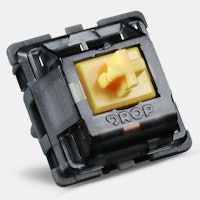
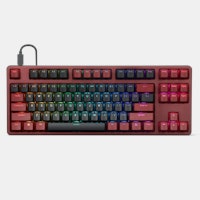
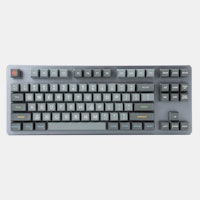

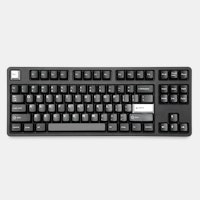

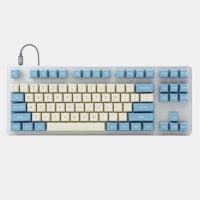




Ergohaven K:02 with tented halves Some use them at shoulder width and put their mouse or trackball in the center. Others integrate various pointing devices into the keyboard itself so they don't even have to reach for a mouse. All in all, true splits offer the widest possible range of customization. Examples: Corne, Sweep, Lily58, Sofle, Iris, Kyria are some popular models from the hundreds of options. Some possible drawbacks of true splits: carrying them around may be cumbersome, updating your firmware/keymap may require handling the two halves separately, similarly to the charging of wireless true splits. Monoblock splits Some people say it's not a split unless you can stick your coffee/mouse/cat between them, but let me disagree. Monoblocks, unibodies, fixed-splits, pseudosplits – these terms refer to the same group of keyboards – can have just as many benefits as true splits. The two halves are stuck together at a comfortable, fixed angle, which may ensure a relaxed hand position. In addition, monoblocks may even have some benefits over true splits: they are easier to transport (one piece, no extra cable), easier to flash, and may be easier to design and build if you embark on creating one for yourself from scratch. Not much room for history here, but let me illustrate this category with a first generation MS Natural Keyboard from 1994, the first widely available sub-$100 angled monoblock – sold by the million. For comparison my custom daily driver, the Azimuth:
Unibody splits with fixed-angle halves (top: 1994 gen1 MS Natural Keyboard, bottom: custom Azimuth – my daily driver) Some cons, depending on your user case: you can't adjust the angle and distance of the halves, and there's not much wiggle room for tenting either. That said, anything is possible, so adjustable and tented monoblocks do exist.
Fixed tenting of monoblock splits by fingerpunch.
Examples: Reviung, Atreus, Cocot46 models, Zaphod – again, just to name a few from hundreds of options –, and yep, the popular Alice layout belongs to this group as well, however this latter is not always considered ergonomic, at least by hardcore ergo freaks. Keywell The majority of splits have flat plates, mostly due to manufacturing considerations. Nevertheless, there are scooped splits and monoblocks with curvy plates, coming with keywells by design.
MoErgo Glove80
Examples: Glove80, Charybdis, Kinesis models, Velvet, Dactyl – which is a parametric design i.e. you can customize and finetune the curvature as you wish. As cool as they look, as much sense this feature makes, and despite all the anecdotal evidence, there's no scientific proof to my knowledge which would support the superiority of keywells (correct me in the comments if I'm wrong!). The transition from a flat split to a scooped one is relatively easy though, so you should definitely try both if you have the opportunity. Other splits The split scene is much more diverse and innovative than this: there are unibody splits with adjustable angle, and many projects which simply don’t fit into predefined categories – TypeSafe, Squeezybox, Pangaea, GrabShell, various DataHand derivatives like the Svalboard in the photo below – just to name a few.
Photo: Svalboard
Key features of splits Despite the versatility of split designs, they share some common features: Thumb cluster Rather than wasting both of your thumbs for a single key (spacebar), why not assign more tasks to them?
Various thumb clusters – they really make a difference! The tree-key thumb arc is a popular sweet spot: easy to access, plenty of functions. With double-function keys (on tap and hold) you can access all your layers and modifiers by using only your thumbs, without moving or even raising your hand. Is this not your cup of tea? There are various thumb clusters with more and less keys, arranged in one or more rows, even in a vertical column, etc. Split angle The most obvious characteristic of splits comes only at the second place on my list. The slant angle helps to alleviate ulnar deviation. Our body is symmetrical, so – in contrast to the standard layout – it makes a lot of sense to have a symmetrical keyboard. Your wrist and carpal tunnel will thank you for this. Columnar stagger While typing, our fingers travel along columns, in contrast to the horizontal rows of the standard layout. I do think this is a great feature, but if you insist on classic staggering, ortholinear or even more exotic symmetric layouts (Katana, Willow, Grin, etc.), there will be numerous splits for you out there.
Columns (instead of rows and horizontal staggering).
Tenting Obviously, adjustable tenting is only possible with a true split. (There are exceptions, but let’s not confuse you at this point.)
Magnetic tenting by BastardKB. Tilting your halves outwards alleviates forearm pronation – again, this may or may not affect you. I don't feel this is an issue for me personally so I'm happy with my mostly flat monoblocks, which by the way may have a slight fixed tenting too. And for the daring there are splits designed with extreme tenting or even vertical typing in mind: GrabShell, Squeezybox, TypeSafe, Clavert. Less keys & Layers No function keys? Where are the numbers? Not even arrow keys?! And you try to sell this as a feature?! Exactly. Trust me, I type out numbers and dates all day long. Literally. And I'd hate to reach up to the number row or over to the numpad – losing my home anchor while touch typing. Instead, you can put all those functions on the home row, and with a proper keymap you can have your beloved arrows or numbers right beneath your fingertips.
Alternative layouts & Logical layout optimization Since many splits are smaller than even a 60% keyboard, most in the 30-50% range I’d say, you’ll likely have to introduce layers and rearrange at least some symbols. This topic deserved a dedicated article (or rather book) on its own. Alternative (Colemak, Dvorak, etc.) and custom layouts, the art and science of logical layout design, may boost your productivity and are an integral part of split life. Low profile In general, lower profile is associated with less wrist extension, thus a more ergonomic setup. Keep in mind though that ergonomics requires a holistic approach. Low profile is not exclusive to split keyboards, however, a great deal of split PCBs support low-pro switches or both MX and Choc ones. Split ergonomics Writing about ergonomics is a very risky territory. After all, it's about _your_ body, working environment and workflow – which is a unique combination. That's why buying a split keyboard may not be the ultimate panacea. General rules may not apply for your use case, a certain split keyboard model may not fit your hands at all. I'd suggest looking into the most important terms and concepts: ulnar deviation, wrist extension and forearm pronation (I will cover these in detail in upcoming posts) – three terms referring to issues along your hand’s three axes of movement. But if you need a more specific piece of advice: Slow down, take breaks, and observe yourself while typing! Compromises For the sake of comprehensiveness, let's be frank about some possible disadvantages of split keyboards.
Final thoughts There’s far more to be said, so if you feel like trying your first split – whether it’s a shiny off-the-shelf pre-built with all the bells and whistles, a budget-friendly kit or a minimalist open-source design –, I’d suggest doing some further research before pressing the Buy button. Knowing the basic types of splits, their most important features and possible drawbacks of some implementations is a good start, but feel free to ask around in all the relevant communities: e.g. the Ergogen Discord or the successor of the r/ErgoMechKeyboards sub on Lemmy. And of course I keep reporting on new models over at kbd.news as well. Split is not just a form factor, it’s also a way of thinking, kind of a philosophy. To bring out the best in your keyboard, even before purchasing anything, you’ll have to put some time and effort into this project: Observe yourself while typing, think critically about the standard keyboard and your workflow, contemplate on your ideal layout – both the physical and logical ones. You may use a layout comparison site or print out some open-source layouts and try your hands at them. And if you are lucky, you can spot all kinds of funky split keyboards at a keyboard meetup in your neighborhood. Getting the hang of splits, thumb clusters and layers may be a life-changing experience. One thing to watch out for is not to become too obsessed with them. Because, as you'd expect, splits are another endless rabbit hole.